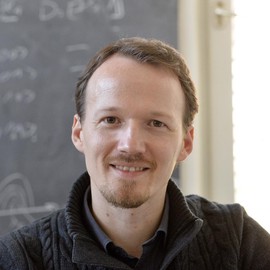 (a) Illustration of the model variable range SYK model for N = 8 Majorana fermions on a circle. The line thickness represents the interaction strength, which decays with distance as r^α. (b) The spectral form factor g for increasing α from light to dark blue shades.
(a) Illustration of the model variable range SYK model for N = 8 Majorana fermions on a circle. The line thickness represents the interaction strength, which decays with distance as r^α. (b) The spectral form factor g for increasing α from light to dark blue shades.
Abstract
The Sachdev-Ye-Kitaev (SYK) model is a cornerstone in the study of quantum chaos and holographic quantum matter. Real-world implementations, however, deviate from the idealized all-to-all connectivity, raising questions about the robustness of its chaotic properties. In this work, we investigate a quadratic SYK model with distance-dependent interactions governed by a power-law decay. By analytically and numerically studying the spectral form factor (SFF), we uncover how the single particle transitions manifest in the many-body system. While the SFF demonstrates robustness under slightly reduced interaction ranges, further suppression leads to a breakdown of perturbation theory and new spectral regimes, marked by a higher dip and the emergence of a secondary plateau. Our results highlight the interplay between single-particle criticality and many-body dynamics, offering new insights into the quantum chaos-to-localization transition and its reflection in spectral statistics.


